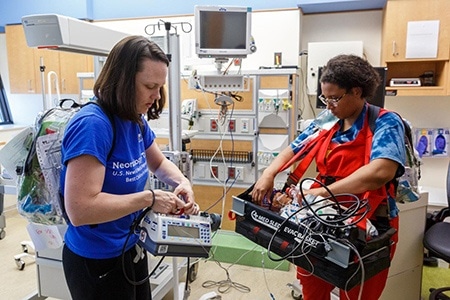 In late August 2011, a magnitude 5.8 earthquake – the strongest east of the Mississippi since 1944 – shook Washington, D.C., with such force that it cracked the Washington Monument and damaged the National Cathedral. On the sixth floor of the neonatal intensive care unit (NICU) at Children’s National in Washington, D.C., staff felt the hospital swaying from side to side. After the shaking stopped, they found the natural disaster exposed another fault: The unit’s 200-plus staff members were not all equally knowledgeable or confident regarding the unit’s plan for evacuating its 66 newborns or their own specific role duringRead More
In late August 2011, a magnitude 5.8 earthquake – the strongest east of the Mississippi since 1944 – shook Washington, D.C., with such force that it cracked the Washington Monument and damaged the National Cathedral. On the sixth floor of the neonatal intensive care unit (NICU) at Children’s National in Washington, D.C., staff felt the hospital swaying from side to side. After the shaking stopped, they found the natural disaster exposed another fault: The unit’s 200-plus staff members were not all equally knowledgeable or confident regarding the unit’s plan for evacuating its 66 newborns or their own specific role duringRead More Training teams for timely NICU evacuation
 In late August 2011, a magnitude 5.8 earthquake – the strongest east of the Mississippi since 1944 – shook Washington, D.C., with such force that it cracked the Washington Monument and damaged the National Cathedral. On the sixth floor of the neonatal intensive care unit (NICU) at Children’s National in Washington, D.C., staff felt the hospital swaying from side to side. After the shaking stopped, they found the natural disaster exposed another fault: The unit’s 200-plus staff members were not all equally knowledgeable or confident regarding the unit’s plan for evacuating its 66 newborns or their own specific role duringRead More
In late August 2011, a magnitude 5.8 earthquake – the strongest east of the Mississippi since 1944 – shook Washington, D.C., with such force that it cracked the Washington Monument and damaged the National Cathedral. On the sixth floor of the neonatal intensive care unit (NICU) at Children’s National in Washington, D.C., staff felt the hospital swaying from side to side. After the shaking stopped, they found the natural disaster exposed another fault: The unit’s 200-plus staff members were not all equally knowledgeable or confident regarding the unit’s plan for evacuating its 66 newborns or their own specific role duringRead More 
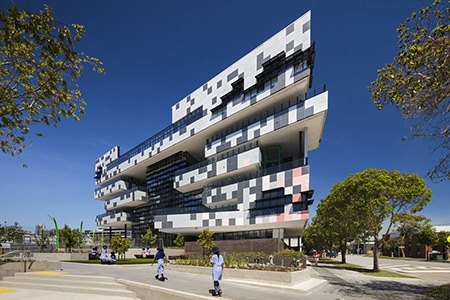 With the popularity of vertical schools in Australia on the rise, Evaculife Managing Director Bruce Bromley said schools are now needing to address the additional risks related to fire safety in multi-story structures more than ever before. The increase in vertical schools is a response to the growing demand for education in cities, with recent reports suggesting that Victoria will need an extra 220 schools by 2026. The first vertical school in Australia opened in 1976, however Victoria now has a handful of inner-city schools, with one opening in South Melbourne earlier this year. As an Accredited Disability Access Consultant
With the popularity of vertical schools in Australia on the rise, Evaculife Managing Director Bruce Bromley said schools are now needing to address the additional risks related to fire safety in multi-story structures more than ever before. The increase in vertical schools is a response to the growing demand for education in cities, with recent reports suggesting that Victoria will need an extra 220 schools by 2026. The first vertical school in Australia opened in 1976, however Victoria now has a handful of inner-city schools, with one opening in South Melbourne earlier this year. As an Accredited Disability Access Consultant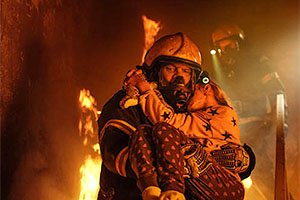 Every year, a significant number of house fires are started by curious children playing with lighters or matches. These fires cause damage, injuries and death, and the majority could be avoided. In this article, we’ll share some tips to help you understand why children light fires, explain why you must educate them and show you how to identify and remove potential risks in your home to keep your kids and your family safe. Keep Fire Out of Reach Always store lighters and matches well out of reach of children, preferably in a locked cabinet or cupboard up high. Never store
Every year, a significant number of house fires are started by curious children playing with lighters or matches. These fires cause damage, injuries and death, and the majority could be avoided. In this article, we’ll share some tips to help you understand why children light fires, explain why you must educate them and show you how to identify and remove potential risks in your home to keep your kids and your family safe. Keep Fire Out of Reach Always store lighters and matches well out of reach of children, preferably in a locked cabinet or cupboard up high. Never store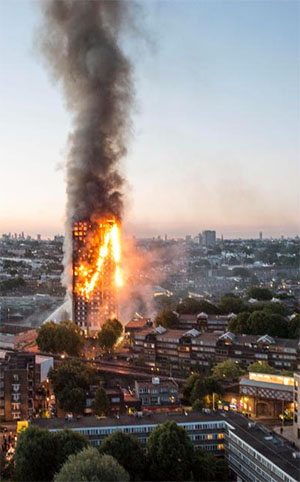 With this month marking 12 months since the tragic Grenfell Tower fire in London that claimed 72 lives, Evaculife Managing Director Bruce Bromley said the La Crosse building could have easily experienced a similar fate if it were a different time of day. “A few more sprinkler heads activated, a different time of day, a different wind, the system would have been overrun and we could easily have had our own Grenfell UK disaster. “What most people do not realise with the La Crosse fire in Docklands is the wind blew the smoke and flames away from the building, and
With this month marking 12 months since the tragic Grenfell Tower fire in London that claimed 72 lives, Evaculife Managing Director Bruce Bromley said the La Crosse building could have easily experienced a similar fate if it were a different time of day. “A few more sprinkler heads activated, a different time of day, a different wind, the system would have been overrun and we could easily have had our own Grenfell UK disaster. “What most people do not realise with the La Crosse fire in Docklands is the wind blew the smoke and flames away from the building, and When it comes to home fire safety, some groups and individuals have a higher risk of injury or death. Most vulnerable are children under five and adults aged 65 plus, as both are twice as likely to die in a residential fire than the general population. Other high-risk groups are people with disability including reduced mobility, cognitive impairment, hearing loss or blindness. If anyone in your home is in a high-risk group, it’s essential that your home fire escape plan includes the extra steps required to assist them in an emergency. Read on to learn some important tips to help
When it comes to home fire safety, some groups and individuals have a higher risk of injury or death. Most vulnerable are children under five and adults aged 65 plus, as both are twice as likely to die in a residential fire than the general population. Other high-risk groups are people with disability including reduced mobility, cognitive impairment, hearing loss or blindness. If anyone in your home is in a high-risk group, it’s essential that your home fire escape plan includes the extra steps required to assist them in an emergency. Read on to learn some important tips to help If a fire starts in your home it can spread rapidly, which is why the warning from your smoke alarm is critical to your survival. However, once a smoke alarm sounds you may only have one or two minutes to get out safely, so having an effective fire escape plan is also a must. Making a plan and ensuring your home is well prepared for a house fire doesn’t take much time or effort, and it can be the difference between life and death. To help you put your plan together, here are 7 simple steps to creating an effective
If a fire starts in your home it can spread rapidly, which is why the warning from your smoke alarm is critical to your survival. However, once a smoke alarm sounds you may only have one or two minutes to get out safely, so having an effective fire escape plan is also a must. Making a plan and ensuring your home is well prepared for a house fire doesn’t take much time or effort, and it can be the difference between life and death. To help you put your plan together, here are 7 simple steps to creating an effective Fire Engineering Buildings are becoming more and more fire engineered. This means that a Fire Engineer has been involved in developing an approved and compliant building design that meets the ‘Performance Requirements’ of the Building Code of Australia (BCA). When a Fire Engineer writes a Fire Engineering Report and proposes the adoption of an ‘Alternative Solution’ as a form of compliance with the BCA, there must be a consideration for the needs of people with disability in the evacuation plans and procedures for the building. Applicable ‘Deemed-to-Satisfy’ Provisions The current BCA has very few ‘Deemed-to-Satisfy’ access provisions pertaining to the
Fire Engineering Buildings are becoming more and more fire engineered. This means that a Fire Engineer has been involved in developing an approved and compliant building design that meets the ‘Performance Requirements’ of the Building Code of Australia (BCA). When a Fire Engineer writes a Fire Engineering Report and proposes the adoption of an ‘Alternative Solution’ as a form of compliance with the BCA, there must be a consideration for the needs of people with disability in the evacuation plans and procedures for the building. Applicable ‘Deemed-to-Satisfy’ Provisions The current BCA has very few ‘Deemed-to-Satisfy’ access provisions pertaining to the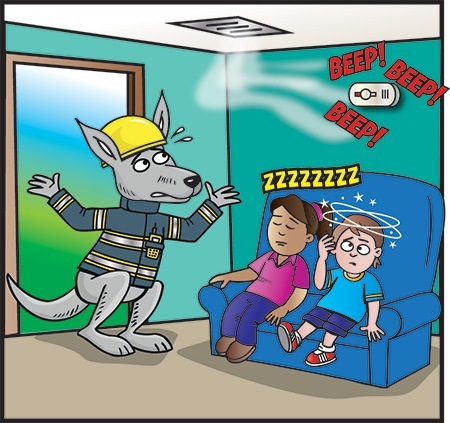 If you’re like most people, you probably haven’t thought too much about carbon monoxide. But carbon monoxide is a common cause of fatal poisoning in homes around the world – and the number of cases of poisoning is on the rise in Australia too. In 2010, Chase and Tyler Robinson died from carbon monoxide poisoning from an unserviced gas heater in their rental property. They were only eight and six years old. The Chase & Tyler Foundation is a national, not-for-profit organisation which was established to reduce the number of deaths and injuries throughout Australia caused by carbon monoxide. Through
If you’re like most people, you probably haven’t thought too much about carbon monoxide. But carbon monoxide is a common cause of fatal poisoning in homes around the world – and the number of cases of poisoning is on the rise in Australia too. In 2010, Chase and Tyler Robinson died from carbon monoxide poisoning from an unserviced gas heater in their rental property. They were only eight and six years old. The Chase & Tyler Foundation is a national, not-for-profit organisation which was established to reduce the number of deaths and injuries throughout Australia caused by carbon monoxide. Through How to teach your kids to be fire safe, and get out safely if a house fire occurs. House fires in Australia are all too common – on average there are 3000 house fires every year in Victoria alone. If you have children, you must educate them on the risk of house fires, and practise your escape plan so they’ll know what to do if they are ever caught in a fire. Here are some tips to help you get your family fire ready. Plan to Survive Every home should have a written fire escape plan, and you should share
How to teach your kids to be fire safe, and get out safely if a house fire occurs. House fires in Australia are all too common – on average there are 3000 house fires every year in Victoria alone. If you have children, you must educate them on the risk of house fires, and practise your escape plan so they’ll know what to do if they are ever caught in a fire. Here are some tips to help you get your family fire ready. Plan to Survive Every home should have a written fire escape plan, and you should share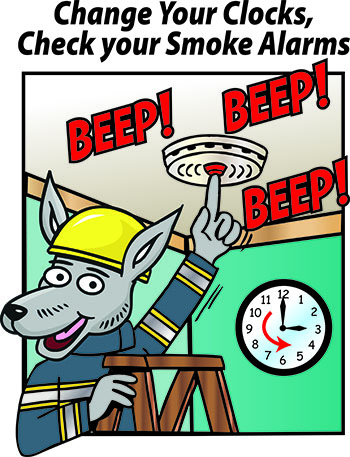 2020 & 2021 Daylight Saving 4 Oct 2020 – Daylight Saving Time Starts When local standard time is about to reach Sunday, 4 October 2020, 2:00:00 am clocks are turned forward 1 hour to Sunday, 4 October 2020, 3:00:00 am local daylight time instead. 4 Apr 2021 – Daylight Saving Time Ends When local daylight time is about to reach Sunday, 4 April 2021, 3:00:00 am clocks are turned backward 1 hour to Sunday, 4 April 2021, 2:00:00 am local standard time instead. 3 Oct 2021 – Daylight Saving Time Starts When local standard time is about to reach Sunday, 3 October 2021, 2:00:00 am clocks are turned forward 1 hour to Sunday, 3 October 2021, 3:00:00
2020 & 2021 Daylight Saving 4 Oct 2020 – Daylight Saving Time Starts When local standard time is about to reach Sunday, 4 October 2020, 2:00:00 am clocks are turned forward 1 hour to Sunday, 4 October 2020, 3:00:00 am local daylight time instead. 4 Apr 2021 – Daylight Saving Time Ends When local daylight time is about to reach Sunday, 4 April 2021, 3:00:00 am clocks are turned backward 1 hour to Sunday, 4 April 2021, 2:00:00 am local standard time instead. 3 Oct 2021 – Daylight Saving Time Starts When local standard time is about to reach Sunday, 3 October 2021, 2:00:00 am clocks are turned forward 1 hour to Sunday, 3 October 2021, 3:00:00